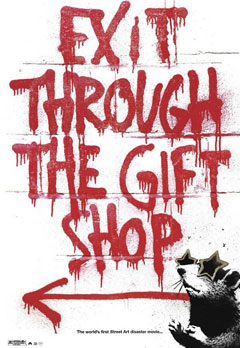Let’s begin
from the title of the exhibition in Milan
mean?
It's a sentence
that helps to convey how I feel about the world I see around me today.
Three words
to describe your work and your style?
3 words is
not enough.
What are
the subjects and themes of your artworks?
I like to
use different subjects to present my themes, they come from the world.
Sometimes I
like to display creatures which are the carrier for the soul, but other times I
describe the carrier
for the creatures.
Is there
any of your works you particularly love? Why, what does it mean, how was it
born..?
I love most
of them as I feel they are like my children.
What would
you like to express and convey through your work?
I like to
share my experience and emotion to people through my artworks. That's why I
really like to put my
art in public space. I don't like to tell other people about right or wrong
from my own point of
view, but I try to be a mirror which stands in the middle.
Where do
you find inspiration for your works and how do they born; do you have some particular
artistic sources or artists that inspire you?
I think the
inspiration of my artworks comes from the reality of the world around me, I
also have dreams which give me inspiration while I am sleeping. I like to read
ancient eastern philosophy,
I can get a lot of energy and ideas from that, not only for my art. I think
Nature is the best
artist, I am inspired a lot from her.
Which
technique do you use to paint?
Mostly I
use spray paint for public space. I like to use tea and ink inside the studio.
You studied
sculpture, how do this influence your painting? Is there a sort of 3d enquiry?
I got to
know the 3 dimensional world better and what’s behind the surface when I was
creating
sculptures, I think it has influenced my paintings, also it's changed the way I
see
things
around me.
Can you
tell me something about your style: you use a very recognizable and essential
style; how did you
come to a similar stylistic choice? All that spirals, do they mean something particular?
I like to
use monochrome color as black, white and grey. Because I prefer to focus on the sharp
physique, it has less illusion without color surface. Monochrome color is strong enough for
me. Skeletal is foundation framework, spirals are the growing trajectory for
the material
elements. They naturally work together create our body and the physical world that the
body can feel. So I just learn from nature about that.
Often the
subjects of your works are animals: why, what do they represent for you?
I like
painting different subjects, not just animals, but I am painting a lot of them
because
I love
animals, they bring this world more vitality, also animals show the onlooker
the
condition
of the world. It is so hard to see them around us now. You may feel cold and
sad if
you land on
a planet which only has one kind of creatures with their machines, so painting
animals is
a carrier to share my mind and memento.
Which is
the best thing to be an artist and what does it mean to you to be a street
artist?
I think “artist”
is one group of human that are kind out of system, the vocation for them is too
think unusually,
so it is a gift for the person who is an artist. Street artist have so much fun
when they are creating the
work, because when you work in public space, everything can happen to you, so
it is more like a
challenge for artist. After the works finish, all the public can see it. How
great is that. So being a street
artist is never getting bored.
How do you
choose the place where to paint and the subject in relation to that place?
It is good
if I can paint some spots where many people are around, I like to paint on old
wall
as well. I
like to change my original plan when I am painting the wall if I have some new
inspiration
come out. Place and walls are also like person for me, I need to meet them and
talk to
them, then start to know what they want from me and what I can give to them.
Is there a
particular place where you’d like to paint?
I love to
paint in the old buildings or abandoned buildings where are full of stories and
rest energy. I can
crossover with time to make my works.
What are
the reactions of people in front of your works?
I like to
see people staying long in front of my works
Your future
projects?
Me and my
wife Faith47 are travelling a lot together, we travelled and painted around
different countries almost
every month this year, so we are always part of same projects. We just had a
show in Australia Israel
Artist
portrait
Name: DAL
EAST
AKA: DAL
Nationality:
Chinese, 1984
Studies: Institute of Fine Art
in China
Active
from: 2004
Technique:
spray paint, ink, tea
Subjects:
creatures, object, energy, emotion
Style: a
“sketchy”, recognizable style; the shape of the subjects comes from spirals of
black, white and silver
lines
Places: Australia , France ,
Denmark , Germany , Italy ,
USA , South Africa , Greece ,
China



